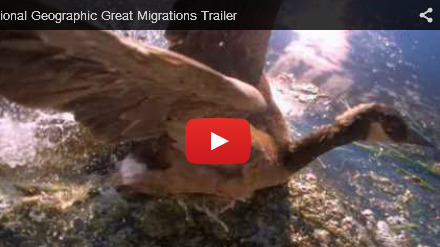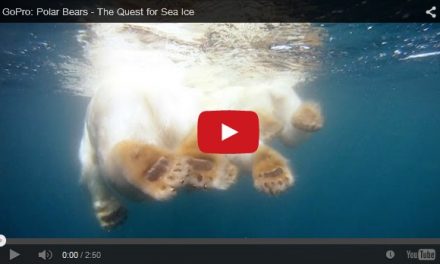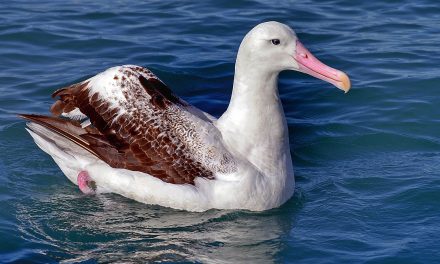
Long ago, in the Paleocene Epoch, much of the Earth was tropical or subtropical. Palm trees grew as far north as Greenland.
Close your eyes and picture a vivid green, lush rain forest that’s teeming with life. If I asked you where you imagined you were, your answer would probably be something like the Amazon or Costa Rica. But not too long ago—geologically speaking—your reply could have been the Arctic.
Fifty-six million years ago, at the end of the Paleocene Epoch, the world warmed more than any human has ever experienced. (So far, that is.) Things were already warm by today’s standards: there were no polar ice caps, which meant sea levels were much higher; and the continents, which were just beginning to take on a familiar shape, were covered in temperate forests and desert habitats. But then the world got even hotter: in fewer than 20,000 years, the global temperature increased by 5 to 8 degrees Celsius. This period is now known as the Paleocene-Eocene Thermal Maximum (PETM), and it had a massive effect on life on Earth.
At the peak of the PETM, rain forests spread farther than they ever had before. The fossilized fronds of palm trees have been found as far north as Wyoming, and some places within the Arctic Circle show evidence of having once had ferns, ginkgoes and redwoods.

Rain forests and desert habitats covered the planet 56 million years ago, in a time that was warmer than any human has ever seen it—as of yet.
Scientists believe that this extreme warming was caused by huge amounts of biogenic carbon that were suddenly released into the atmosphere in the form of carbon dioxide, methane and other gases. Where did the gases come from? Some speculate that a rash of massive wildfires released tons of CO2 that had been locked up in living plants. Others believe that giant seams of coal could have been exposed to the heat of volcanic activity, which would have released the carbon from fossilized plants.
A third hypothesis is that an otherwise mild warming event triggered the release of greenhouse gases by melting deposits of methane hydrate, a compound similar to ice but which contains molecules of methane trapped by molecules of water. Hydrates are usually stable as long as they are kept under a lot of pressure, such as deep in the oceans, or if they are kept cold, such as in permafrost. But if the oceans warm up and the permafrost melts, the hydrates melt, releasing bursts of methane, which is an even more potent greenhouse gas than CO2. And the more warming that happens, the more melting there is, which discharges even more greenhouse gases, creating a classic, positive feedback loop.
Here’s the kicker: no matter how it started, during the PETM carbon was released into the atmosphere at only a fraction of the rate at which it’s being emitted today. At the peak of that thermal maximum, as much as 1.7 billion metric tons of carbon were being released per year for at least 4,000 years. In 2014 alone, 9.8 billion metric tons of carbon were released into the atmosphere.

The Paleocene is notable for being the geologic stretch of time immediately following the extinction of the dinosaurs. That opened up vast ecological niches for other animals, such as reptiles, which flourished.
The PETM wasn’t bad for all life forms. In fact, reptiles thrived. Fossils of alligators, crocodiles and turtles have been found in nearly every fossil bed we know of that dates back to that time, even in the polar forests of Canada and Greenland.
In the oceans, however, life in hothouse Earth became much harder. In some places, it was almost impossible. Many spots became too warm for plankton, which were—and still are—the basis for most ocean food webs.
An even more devastating side effect of high CO2 levels was ocean acidification. When ocean water absorbs CO2, it becomes more acidic. This depletes the waters’ concentrations of carbonates, the compounds that foraminifera (single-cell organisms that have external or internal shells) use to build their bodies’ structures. During the PETM, between 30 and 50 percent of all foram species went extinct. The same phenomenon stunted the growth of hard corals, which also need carbonates to build their skeletons. During the PETM and for millions of years afterward, big, complex coral reefs all but disappeared from the fossil record.

Turtle-like fossils have been found in almost every PETM fossil bed, even in Canada and Greenland. ©Candice Gaukel Andrews
The Paleocene-Eocene Thermal Maximum ended suddenly and mysteriously. During the course of the following epoch, the Eocene, the climate slowly began to cool. Although the temperature occasionally spiked, it never again reached the extremes of the maximum. By the end of the Eocene Epoch, about 34 million years ago, polar ice caps had begun to form.
Watch the film below, produced by Curiosity Stream in collaboration with PBS Digital Studios. It’s titled The Last Time the Globe Warmed. Despite how little we know about the beginning or the end of the PETM, the video shows us how extreme the effects of climate change—appropriate for us now, in the midst of the Earth’s current period of warming—can be. For some organisms, such as early primates, universal warm temperatures were a chance to spread to new locations. But for some marine creatures, such high heat and carbon concentrations spelled disaster.
In recent years, the rate of annual carbon emissions has been more than five times greater than they were at the peak of the PETM. Just over the past 100 years, the average global temperature has increased 0.7 degrees Celsius. During the PETM, it took thousands of years for temperatures to rise that much.
Now, if you closed your eyes again and imagined that lush, green forest, where would you place it on planet Earth?
Here’s to finding your true places and natural habitats,
Candy


































